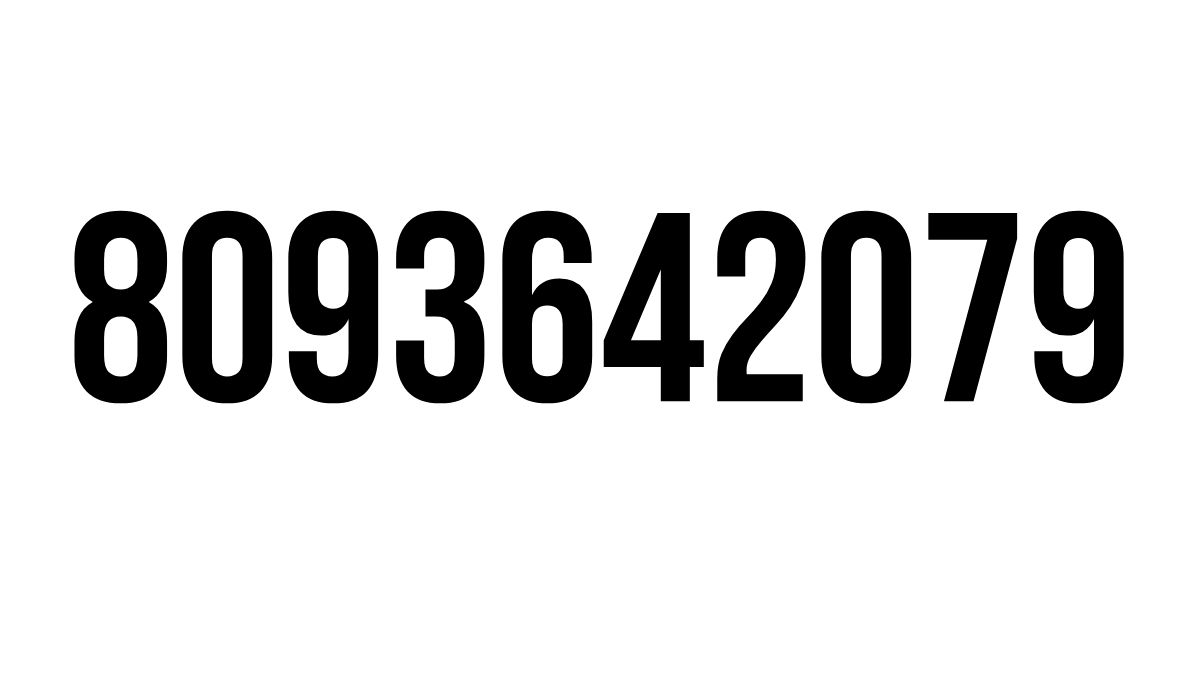TOPIC
Why scjerk Is Trending & How You Can Benefit

If you’ve spent any time on forums or social media lately, you’ve probably seen scjerk popping up everywhere. This once niche term has now taken the internet by storm, becoming a trending topic across platforms. But what exactly is scjerk, why is it trending, and how can you leverage this trend to your benefit?
Whether you’re a curious bystander, a newcomer to the online culture it represents, or someone actively poking fun within the science community, this guide will explain the trend’s rise and unveil its humor-laden appeal. We’ll also explore how you can better understand and join in with one of the web’s quirkiest communities.
What is scjerk?
At its heart, scjerk (short for “science-jerk”) is a playful, satirical take on science discussions online. Originating from forums like Reddit, specifically communities like r/scjerk, this trend is a humorous spin-off of traditional science communication. Think tongue-in-cheek comments, witty memes, and exaggerated pseudoscience that isn’t afraid to poke fun at itself.
Scjerk combines a passion for learning with a hint of irreverence, showing that you don’t need to be a Nobel laureate to join in. It’s a space where science enthusiasts gather to celebrate the absurdities of science culture while creating a lighthearted, yet surprisingly insightful, dialogue.
The trend amplifies the internet’s love for humor, turning complicated jargon and abstract concepts into digestible, meme-worthy content.
Core Elements of scjerk
- Memes Over Manuscripts: Instead of dense scientific papers, scjerk simplifies ideas into easy-to-share memes. These often involve inside jokes that range from particle physics to molecular biology.
- Playful Skepticism: While satire is at the forefront, there’s often an underlying layer of questioning norms within the scientific community, from funding structures to publication ethics.
- Community Interaction: Scjerk thrives on participation. Users build on each other’s jokes, memes, or ideas, creating a collective humor unique to this trend.
Why is scjerk Trending?
The surge in popularity isn’t just about funny science memes—it stems from a larger cultural moment where people are looking for ways to humanize science and make it more relatable.
1. The Boom of Internet Microcultures
The internet allows niche communities to thrive. Platforms like Reddit and Twitter house hyper-specific conversations that range from serious debates to absurd humor. Scjerk fits perfectly into this landscape as a microculture that doesn’t take itself too seriously.
Its ability to blend a genuine interest in science with humor that’s hyper-relevant to today’s meme culture appeals to Gen Z, millennials, and online communities at large.
2. Escapism Meets Education
2020s have been tumultuous, with global issues like health crises, environmental concerns, and social debates dominating discourse. Amidst this, scjerk acts as a form of light escapism. It takes the seriousness of science and packages it into digestible, laugh-out-loud moments that provide a refreshing break without losing its educational undertone.
3. A New Take on Science Communication
Traditional science communication often feels inaccessible. Dense language, complex graphs, and detached tones can make it intimidating to the average person. Scjerk changes the game by making science approachable and, dare we say, fun! Memes and satire open up the field to a new audience, fostering inclusivity within the scientific realm.
4. Virality Potential
Satirical science memes are incredibly shareable. Whether it’s a meme roasting the overuse of p-hacking or a joke about Schrödinger’s cat having an existential crisis, the topical humor resonates widely. This high shareability fuels its viral nature.
How Can You Benefit from scjerk?
You might be wondering, “Okay, I get why it’s funny, but why should I care?” The good news? Whether you’re an individual creator, an educator, or just a curious bystander, there are practical ways to engage meaningfully with this trend.
1. Join the Conversation
Get involved! Delve into platforms where scjerk content thrives, such as Reddit’s r/scjerk or certain Twitter threads. Comment on memes, partake in threads, and share your own observations with a humorous spin.
By immersing yourself, you not only find entertainment but also tap into a wealth of creative discussions that can broaden your understanding (and enjoyment) of science.
2. Use It as a Learning Tool
If you’re an educator or student, scjerk’s satirical content offers a fun and accessible way to learn about or teach science. Memes grounded in real concepts make complex ideas easier to grasp and retain for newcomers to a topic.
Whether you’re teaching evolution, astrophysics, or CRISPR, breaking the monotony with a joke or meme can make your lessons more engaging.
Example: A comic about scientists procrastinating on grant applications can open a deeper discussion on the challenges of research funding.
3. Engage with Viral Trends on Social Media
For content creators, hopping on trending topics like scjerk is a goldmine for engagement.
- Create your own memes or witty commentary.
- Share popular posts (always credit the creator!) that align with your content goals.
- Spark conversations by inviting your followers to submit their favorite science jokes or memes.
This strategy not only increases traffic but also positions you as someone in tune with online movements.
4. Network Within the Community
Scjerk’s humor lands best with science enthusiasts, researchers, and educators. Engaging actively could help you forge connections with like-minded individuals or communities. Whether you discover a fellow researcher with similar interests or attract followers to your brand, this trend is an excellent icebreaker.
5. Find Inspiration for Projects
Scjerk memes and discussions often touch on real issues—from academic burnout to the reproducibility crisis in research. By observing these themes, you might spark ideas for articles, research projects, or campaigns that address these very topics in an innovative way.
The Lighter Side of Science, for Everyone
Scjerk reminds us that science doesn’t have to be all high-stress lab work and lofty papers. Whether you’re a researcher, a hobbyist, or just love a clever meme, there’s something for everyone in this quirky, scientific microculture.
By leaning into its playful side, you can not only have a good laugh but also find creative avenues to engage with science, connect with like-minded individuals, and spark curiosity.
TOPIC
Exploring Insetprag: The Hidden Gem of Urban Innovation

Introduction to Insetprag
Nestled away from the bustling tourist trails, Insetprag is a city that invites discovery. Often overshadowed by its more famous neighbors, this urban gem brims with innovation and creativity. From stunning architecture to vibrant cultural experiences, Insetprag offers a unique blend of the old and the new.
As you wander through its streets, you’ll find an inspiring spirit that captivates both locals and visitors alike. This city isn’t just about sights; it’s about stories waiting to be uncovered. Whether you’re an adventurer at heart or simply looking for a fresh perspective on urban living, Insetprag holds something special for everyone.
Join us as we explore what makes Insetprag truly exceptional—its rich history, groundbreaking innovations, delicious cuisine, and commitment to sustainability. Prepare yourself for an unforgettable journey into one of Europe’s best-kept secrets!
The History of Insetprag
Nestled in the heart of a bustling metropolis, Insetprag has a rich tapestry woven from its diverse past. Its origins date back centuries, rooted in medieval trade routes that facilitated cultural exchanges.
As time passed, Insetprag evolved through various historical epochs. The architectural influences of different eras are evident in its streets—Gothic structures stand shoulder to shoulder with modern designs. Each building tells a unique story.
The city was not just an economic hub; it became a melting pot of ideas and innovations during the Industrial Revolution. Artists and thinkers flocked here, shaping its vibrant culture.
In recent decades, Insetprag has embraced modernization while preserving its heritage. This blend creates an atmosphere where history meets contemporary life seamlessly, making every corner worth exploring for those curious about its fascinating journey.
Urban Innovation in Insetprag
Insetprag stands at the forefront of urban innovation. This vibrant city has embraced technology and creativity to revitalize its landscape.
Smart city initiatives are reshaping daily life here. High-tech solutions improve public transport, making it efficient and user-friendly.
Locals benefit from innovative waste management systems that reduce landfill use, promoting recycling instead. These efforts reflect a broader commitment to sustainability within the community.
Cultural hubs are thriving thanks to collaborative spaces that encourage innovation. Artists, entrepreneurs, and tech enthusiasts come together to foster new ideas and projects.
Public art installations adorn streets, blending creativity with functionality. They not only beautify but also engage residents in conversations about urban living—making culture accessible for everyone.
In Insetprag, forward-thinking design principles guide architecture too. Green buildings equipped with solar panels demonstrate how aesthetics can align with environmental responsibility while enhancing modern living standards.
Must-Visit Places in Insetprag
Insetprag is brimming with captivating spots that invite exploration. Start your adventure at the vibrant Central Market, a hub of local produce and artisan crafts. It’s perfect for sampling fresh goods while soaking in the atmosphere.
Stroll through the peaceful lanes of Old Town Square, where stunning architecture meets rich history. The colorful buildings tell stories from centuries past. Don’t miss the iconic clock tower that chimes every hour.
For art enthusiasts, the Contemporary Art Museum offers thought-provoking exhibitions by both local and international artists. Each piece sparks conversation and invites reflection.
Nature lovers should head to Insetprag Botanical Gardens. This serene oasis features diverse plant species from around the globe, creating a lush escape within urban life.
Take some time to wander along the River Walkway for picturesque views and charming cafes lining its banks. It’s an ideal spot to unwind after a day of discovery in this hidden gem.
Local Cuisine and Culture in Insetprag
Insetprag is a culinary treasure trove waiting to be explored. The local cuisine embodies a delightful mix of traditional flavors and modern twists. Street vendors serve up savory pastries filled with seasonal vegetables, while cozy bistros offer hearty stews that warm the soul.
One dish you cannot miss is the signature Insetpragian dumplings, which are fluffy and often served with rich sauces or fresh herbs. Pair them with locally brewed beer for an authentic experience.
Cultural festivals play a significant role in showcasing Insetprag’s vibrant identity. Music fills the air during these events, blending folk traditions with contemporary beats. Local artisans display their crafts, creating an atmosphere that celebrates creativity and community spirit.
Dining here goes beyond food; it’s about connection. Sharing meals brings people together, fostering friendships that blossom amid laughter and stories passed down through generations.
Sustainability and Green Initiatives in Insetprag
Insetprag is leading the charge in sustainability and green initiatives. The city has embraced innovative practices that enhance urban life while minimizing environmental impact.
Bicycle-sharing programs have flourished, promoting eco-friendly transportation. Residents enjoy cycling through well-planned routes, reducing reliance on cars.
Green roofs and vertical gardens are becoming common sights. These installations not only beautify buildings but also improve air quality. They provide habitats for local wildlife too.
Community gardens have sprouted in various neighborhoods, inviting locals to grow their own produce. This fosters a sense of community and encourages sustainable food practices.
Moreover, Insetprag actively supports renewable energy projects. Solar panels adorn many rooftops, harnessing sunlight to power homes and businesses.
These efforts reflect a commitment to preserving the environment for future generations while enhancing the quality of life today.
Why You Should Visit Insetprag
Insetprag is a canvas of urban creativity waiting to be explored. Every corner offers inspiration, from vibrant street art to innovative architecture.
The energy here is infectious. Locals are passionate about their city and eager to share its secrets. Join guided tours or simply wander through quirky neighborhoods where tradition meets modernity.
Nature lovers will find solace in the many parks and green spaces that dot the landscape. These areas provide a perfect escape from the hustle and bustle.
Cultural enthusiasts can immerse themselves in galleries featuring local artists or enjoy performances at unique venues. Each experience adds depth to your understanding of this dynamic city.
Don’t forget about shopping! The markets showcase handcrafted items you won’t find anywhere else, making for memorable souvenirs.
Whether you’re an adventurer or a foodie, Insetprag caters to all tastes and interests with open arms.
Conclusion
The allure of Insetprag lies in its unique blend of history, culture, and innovation. This city is a vibrant tapestry woven from the threads of its past while embracing the future with open arms. Whether you’re wandering through its rich historical arteries or experiencing cutting-edge urban innovations, there’s always something new to discover.
Travelers find themselves enchanted by the local cuisine and warm hospitality that reflect a community proud of its roots. The focus on sustainability adds another layer to this dynamic city, making it not just an exciting destination but also a model for responsible living.
Visiting Insetprag isn’t merely about sightseeing; it’s about immersing yourself in an experience filled with inspiration and creativity. From historic landmarks to innovative projects aimed at enhancing urban life, every corner tells a story waiting to be explored. For those looking for adventure off the beaten path or seeking insights into what makes cities thrive today, Insetprag stands out as an essential stop on your journey.
This hidden gem beckons travelers eager for connection and discovery—be prepared to fall in love with everything it has to offer!
TOPIC
Exploring 8093642079: Facts, Figures, and Fascinating Insights

Introduction to the Number 8093642079
Have you ever stumbled upon a number that piqued your curiosity? The number 8093642079 is one such enigma, begging to be explored. With its unique sequence of digits, it might appear ordinary at first glance. However, delve deeper and you’ll uncover layers of significance waiting to be revealed. From intriguing historical events tied to this number to its potential meanings in various cultures and numerology, there’s more than meets the eye. Let’s embark on an exciting journey through the facts, figures, and fascinating insights surrounding 8093642079!
The Origin and Meaning of the Number
The number 8093642079 is intriguing for several reasons. Its uniqueness lies in its length and composition, making it stand out in a world filled with shorter numerical sequences.
In numerology, each digit holds significance. The individual numbers can be broken down to reveal deeper meanings about life paths and personal traits. For instance, the combination of digits might suggest themes of change or innovation.
Historically, long strings like this one often appear in coding systems or as identifiers for various purposes. This adds an additional layer of complexity to understanding its origin.
Speculation exists around the potential uses or associations tied to such a number. Whether it’s linked to technology or culture remains open for interpretation. Each person may find their own meaning when exploring its depths further.
Significant Events Associated with 8093642079
The number 8093642079 has a unique place in various significant events. It emerged as a focal point during community celebrations, symbolizing unity and togetherness.
In the world of technology, it was referenced in groundbreaking research studies that aimed to enhance communication systems. This linkage showcases how numbers can transcend mere digits, becoming crucial identifiers in scientific advancements.
Moreover, 8093642079 found its way into popular culture through songs and literature. Artists have drawn inspiration from its rhythm and sequence, weaving it into narratives that resonate with people on different levels.
Sports enthusiasts also recognize this number for its association with memorable moments—records set or broken during games where it played an integral role on jerseys or scoreboards. Each occurrence adds another layer to the story behind 8093642079.
The Cultural Significance of 8093642079
The number 8093642079 may seem like a random string of digits, yet it holds unique cultural significance in various contexts. Some view it as a symbol of connection, representing the unbreakable ties between communities.
In art and literature, numbers often convey deeper meanings. Artists might use 8093642079 to provoke thought about technology’s impact on human relationships. This perspective invites discussions around modern connectivity versus traditional bonds.
Interestingly, numerology enthusiasts often dissect this number for hidden insights. Each digit contributes its energy and attributes, leading to interpretations that resonate with personal experiences or societal trends.
Across different cultures, numeric patterns can evoke nostalgia or curiosity. The sequence could inspire local folklore or even be woven into urban legends as people share their own narratives tied to these figures.
Thus, while seemingly mundane at first glance, 8093642079 becomes a canvas for creativity and community dialogue.
Numerology and Symbolism of 8093642079
Numerology offers intriguing insights into the essence of numbers, and 8093642079 is no exception. When broken down, each digit contributes to a deeper understanding.
Starting with the first segment, 809 signifies abundance and new beginnings. The number eight often represents power and material success. Next comes zero, which amplifies the energy of adjacent digits while symbolizing potential.
The sequence continues with three—creativity and self-expression—and six, embodying harmony and balance in relationships. Two brings duality and cooperation into play.
Adding these individual meanings together creates a complex narrative about growth through collaboration. In various cultural contexts, such combinations can reveal paths toward enlightenment or transformation.
Interestingly, this string can serve as a reminder that every journey involves numerous facets working together harmoniously for personal evolution. Each component invites reflection on how they influence both our lives and surroundings in profound ways.
Fun Trivia and Interesting Facts about 8093642079
Did you know that the number 8093642079 is often cited in various trivia games? Its uniqueness makes it a popular choice for quizzes and puzzles.
In mathematics, 8093642079 holds significance. It is an interesting blend of digits that can spark curiosity among mathematicians and enthusiasts alike.
This number also appears in certain codes used for telecommunications. It’s more than just a random sequence; it serves functional purposes too.
People have connected personal stories to this number, using it as a lucky charm or significant date in their lives.
Interestingly, some artists have even incorporated 8093642079 into their works, making it part of modern culture.
These elements contribute to its mystique and allure within different communities across the globe.
Conclusion: The Enduring Impact of 8093642079
The number 8093642079 holds a unique place in various contexts. Its intriguing combination of digits has sparked curiosity and interest across different platforms.
From its origins to the rich cultural significance it carries, 8093642079 is more than just a sequence of numbers. It offers insights into how we perceive numbers beyond their face value.
Numerology enthusiasts have explored its symbolism, revealing layers that speak to human experiences and emotions. Fun trivia surrounding this number adds an element of enjoyment, drawing people into its narrative.
As society continues to evolve, so does our understanding and interpretation of numbers like 8093642079. This digit will likely maintain relevance in conversations about numerology, culture, and even technology as we move forward.
The impact of such seemingly random sequences can be profound and long-lasting. Each individual may find personal meaning or connection within these figures that resonate with them on different levels.
TOPIC
The Evolution of Cumhuriyet: A Historical Perspective

Introduction to Cumhuriyet
Cumhuriyet, a term that resonates deeply within the heart of Turkey, represents far more than just a political system. It symbolizes the dreams and aspirations of a nation seeking to forge its identity in the modern world. Established amidst great upheaval, Cumhuriyet has woven itself into the very fabric of Turkish society. As we embark on this journey through time, we will explore how Cumhuriyet evolved from its inception to its current state, examining not just milestones but also the challenges it faced along the way. This historical perspective reveals insights into how it shaped culture and influenced millions while confronting controversies that sparked debate throughout generations. Join us as we uncover the enduring legacy of Cumhuriyet and what lies ahead for this pivotal institution in Turkey’s narrative.
Founding of the Republic of Turkey and Cumhuriyet’s Role
The founding of the Republic of Turkey in 1923 marked a pivotal moment in history. It was not just a political shift; it represented a radical transformation for an entire nation.
Cumhuriyet, meaning “republic” in Turkish, emerged as a symbol of modernity and change. Under Mustafa Kemal Atatürk’s leadership, the vision was clear: to establish a secular state that embraced democratic values.
Atatürk’s reforms were sweeping. They aimed to break from centuries of imperial rule and forge an identity rooted in nationalism and progress. Education became paramount, fostering literacy and civic engagement among citizens.
Cumhuriyet acted as both the backbone and blueprint for new governance structures. The principles embedded within its ideology shaped laws, social norms, and cultural practices across Turkey.
As these foundational changes took root, Cumhuriyet began to influence all aspects of life—from politics to arts—creating pathways for unprecedented growth and development throughout the nation.
Political Changes and Challenges Faced by Cumhuriyet
Cumhuriyet has navigated a turbulent political landscape since its inception. The early years witnessed rapid reforms aimed at modernizing Turkey and fostering secularism. However, these changes often faced resistance from traditional factions.
As the decades rolled on, military coups became a recurring theme in Turkish politics. Each intervention reshaped Cumhuriyet’s role and influence within society. These upheavals led to periods of repression but also spurred calls for democracy and human rights.
The rise of populism introduced new dynamics as well. Leaders with authoritarian tendencies challenged the principles upon which Cumhuriyet was founded. This created friction between progressive ideals and conservative values.
Today, Cumhuriyet grapples with ongoing political polarization. The push for freedom of expression clashes against attempts to control dissenting voices, making its path forward both complex and uncertain.
Influence on Turkish Society and Culture
Cumhuriyet has profoundly influenced Turkish society and culture since its inception. It marked a pivotal shift towards modernity, promoting secularism in a predominantly Muslim nation. This transformation encouraged the embrace of Western ideals, reshaping traditions and social norms.
Education became more accessible under Cumhuriyet’s framework. Literacy rates soared as public schools flourished, fostering a sense of national identity. The emphasis on education empowered women, allowing them to step into roles previously denied to them.
Art and literature blossomed during this period, reflecting a new wave of creativity inspired by democratic values. Writers and artists began experimenting with themes that resonated with contemporary life rather than traditional narratives.
Everyday customs also evolved; family structures shifted towards nuclear units over extended families. These changes laid the groundwork for a diverse cultural landscape where multiple identities coexist harmoniously yet distinctly within Turkey today.
Controversies Surrounding Cumhuriyet
Cumhuriyet, while celebrated for its foundational role in modern Turkey, has not been without its controversies. Critics often point to the authoritarian tendencies that emerged under various administrations, raising concerns about freedom of expression and political dissent.
The secularism enshrined by Cumhuriyet has sparked significant debate. Many argue that it alienates religious factions within society. This tension continues to shape the political landscape today.
Moreover, issues surrounding historical narratives play a crucial role in these discussions. The portrayal of early republic figures and events invites differing interpretations, leading to heated debates among historians and citizens alike.
In recent years, allegations regarding media censorship linked to government influence further exacerbate tensions around Cumhuriyet’s legacy. The complex interplay between tradition and modernization remains a focal point for ongoing societal discourse as people navigate their identities in this evolving context.
Current State and Future Outlook of Cumhuriyet
Today, Cumhuriyet stands at a complex crossroads. As Turkey grapples with modern challenges, the publication faces both opportunities and hurdles.
In an age dominated by digital media, Cumhuriyet has adapted to keep its relevance. Its commitment to investigative journalism remains strong. This approach appeals to readers seeking transparency in governance.
However, political pressures continue to loom large. Censorship and restrictions on freedom of expression are ongoing threats. These factors shape the newsroom’s climate daily.
Looking ahead, Cumhuriyet must navigate these turbulent waters carefully. Engaging younger audiences through innovative content could enhance its influence.
The future of Cumhuriyet relies heavily on resilience and adaptability in a rapidly changing environment. Embracing new technologies while upholding journalistic integrity will be crucial for survival and growth in the years to come.
Conclusion: The Enduring Legacy of Cumhuriyet
Cumhuriyet has played a pivotal role in shaping modern Turkey. Emerging from the ashes of the Ottoman Empire, it laid the foundation for a new national identity and governance. Its principles of secularism, democracy, and nationalism resonate deeply within Turkish society even today.
The evolution of Cumhuriyet is marked by its resilience against political upheavals and societal challenges. Throughout its history, it has witnessed various transformations that reflect the dynamic nature of Turkish politics and culture. While controversies have surfaced regarding its interpretations and implementations, these discussions highlight its importance to national discourse.
In contemporary times, Cumhuriyet continues to influence not just politics but also arts, education, and social structures in Turkey. The enduring legacy is evident as each generation grapples with what it means to be part of this republic.
As Turkey moves forward into an uncertain future, Cumhuriyet remains a touchstone for many citizens. It symbolizes hope for progress while serving as a reminder of historical struggles endured for freedom and equality. The journey thus far shows that regardless of challenges faced or changes enacted, Cumhuriye stands significant in the hearts and minds of people who strive to uphold its founding ideals.
-

 BUSINESS2 weeks ago
BUSINESS2 weeks agoBoost Your Brand with adsy.pw/hb3 Digital Solutions
-

 TOPIC1 week ago
TOPIC1 week agoHow Appfordown Simplifies Your App Experience: Tips and Tricks
-

 BUSINESS2 months ago
BUSINESS2 months agoTransform Your Business with MyWape
-

 TOPIC2 months ago
TOPIC2 months agoWhy Wepbound is Revolutionizing the Way We Connect Online
-

 TOPIC3 weeks ago
TOPIC3 weeks agoHow ATFBoru is Shaping Online Interaction in Unique Ways
-

 TOPIC1 week ago
TOPIC1 week agoSpeedyShort.com: Tips and Tricks for Effective Link Sharing
-

 TECHNOLOGY1 month ago
TECHNOLOGY1 month agoBunkralbum: A Comprehensive Overview
-

 TOPIC2 months ago
TOPIC2 months agoUnderstanding Erothtos: What Makes It a Cultural Phenomenon?
